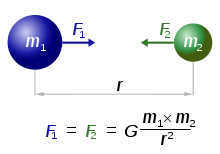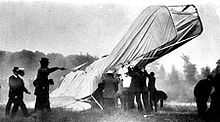Instructional design/Learning objectives/Examples and Non-Examples of Performance Phrases
< Instructional design < Learning objectives| Instructional Design | ID Learning Objectives | < Back | Page 5 of 6 | Next > |
Performance Phrase Questions
When constructing the performance phrase for a learning objective, ask the following three questions:
- Is the performance a main intent of the instruction?
- Is the performance observable? (If it is covert, can an indicator verb be used that is observable?)
- Is the performance measurable?
Non-Examples of False Performance

One of the problems with writing the behavior portion of the learning objective is using verbs that are not observable.
For example:
- Know Newton's Law of Universal Gravitation
- Understand Newton's Law of Universal Gravitation
- Appreciate Grunge music
- Learn the correct steps to CPR
These verbs have been used on examples from classes you have taken before. The actions in these performance phrases are neither observable nor measurable. When the learning goal is covert, an indicator must be used that is observable.
If we want them to know the law of gravity, a better representation would be to
- State Newton's Law of Universal Gravitation (Knowledge)
- Explain how Newton's Law of Universal Gravitation affects a falling object (Comprehension)
- Solve Newton's Law of Universal Gravitation for two objects(Application)!
Non-Examples of Unclear Performance
Another problem with writing performance phrases is a lack of clarification. There are two ways to fix this problem: either add a condition or modify the performance phrase.
For example:
- Identify the probable cause of the first powered fixed-wing aircraft accident
- Differentiate between an observation, finding, and cause of an accident

You have probably seen many objectives written with verbs such as identify, discrimminate, differentiate, etc. While these performances can be observable and measurable, by themselves there is a potential for misunderstanding "how" the performance is done. Sometimes, we can add conditional phrases (which will be covered in the next lesson). Another solution is to choose another verb that still meets the main intent of the instruction.
If we want someone to identify the probable cause of the accident, an alternate solution would be to:
- Recite the probable cause of the first powered fixed-wing aircraft accident (Knowledge)
- Explain the probable cause of the first powered fixed-wing aircraft accident (Comprehension)
- Summarize the probable cause of the first powered fixed-wing aircraft accident (Analysis)
Navigation
Click Next to continue.
| Instructional Design | ID Learning Objectives | < Back | Page 5 of 6 | Next > |